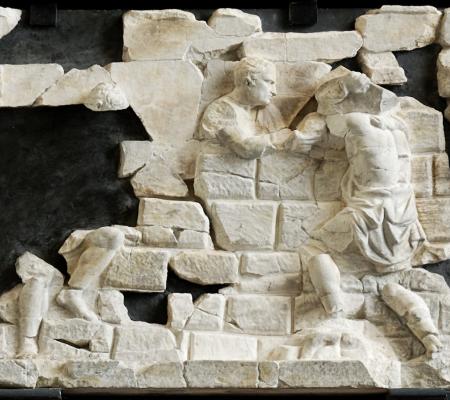This lecture will explore the practice of architectural production in Rome during the Mid-Republican period (c. 400 – 200 BCE), focusing in particular on ashlar masonry. While scholarship generally downplays the importance of this period to larger developments in Roman building practices, Dr. Seth Bernard’s research points instead to fundamental technological changes in the practice of architectural production at this time. Generally, changes reflect an increasing awareness of the physical properties of Central Italian building stones, as nascent Roman imperialism made available an expanding array of quarry resources to urban masons. At the same time, conquest brought new workers to the urban labor market, and this lecture pursues the connection between changes in building practices and urban society, offering a complex model of early Roman imperialism’s effects on both physical and human aspects of the Mid-Republican urbs. Bernard draws from a range of evidence, from information transmitted by Vitruvius’ De Architectura, to geological study of Roman building stones, and, especially, a close reading of Rome’s archaeological record.
Seth Bernard is Assistant Professor of Classics at the University of Toronto, where his research and teaching focus on the socioeconomic history and archaeology of Rome and Italy, particularly during the Republican period. He holds a bachelor's degree in Classics from Amherst College and a doctoral degree in Ancient History from the University of Pennsylvania, and he has been both a Regular Member of the American School in Athens and a Rome Prize Fellow at the American Academy in Rome. He has published on a range of topics, including most recently an article on the origins of Roman coinage in the Journal of Roman Studies and a monograph on the socioeconomics of building in Mid-Republican Rome. He currently co-directs archaeological excavations at Populonia, on the coast of Tuscany and has previously participated in field projects in Greece, Morocco and Italy.
Event Details
ART 1.120


